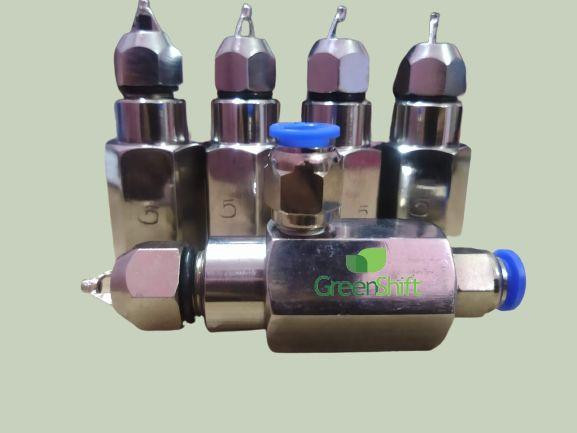Introduction:
Agricultural spray nozzles play a crucial role in modern farming practices, offering precise and efficient application of various agricultural inputs such as pesticides, herbicides, fungicides, and fertilizers. These nozzles have evolved significantly over the years, from basic designs to sophisticated technologies, aiming to optimize crop protection, minimize environmental impact, and maximize resource efficiency. This summary explores the evolution, types, applications, and benefits of agricultural spray nozzles, highlighting their pivotal role in sustainable agriculture.
Evolution of Spray Nozzles:
Spray nozzle technology has undergone significant evolution driven by advancements in materials science, fluid dynamics, and precision engineering. Early spray nozzles were simple, consisting of basic designs that delivered a uniform spray pattern. However, the need for more precise application led to the development of various nozzle types, including flat fan, hollow cone, full cone, and air induction nozzles. These innovations allowed farmers to customize spray applications according to specific crop and environmental conditions, optimizing efficacy while minimizing waste.
Types of Spray Nozzles:
Flat Fan Nozzles: Flat fan nozzles are widely used in agriculture for their ability to produce a uniform spray pattern with even distribution. They are suitable for foliar applications, providing excellent coverage and penetration into the crop canopy.
Hollow Cone Nozzles: Hollow cone nozzles produce a ring-shaped spray pattern, ideal for targeted applications such as insecticide or fungicide treatments. They offer better coverage of plant surfaces and minimize drift.
Full Cone Nozzles: Full cone nozzles emit a circular spray pattern, ensuring uniform coverage over a specific area. They are commonly used in orchards and vineyards where precise application is crucial for effective pest and disease management.
Air Induction Nozzles: Air induction nozzles incorporate air into the spray droplets, reducing drift and improving deposition on target surfaces. They are especially valuable in windy conditions or when spraying near sensitive areas to minimize off-target effects.
Applications of Spray Nozzles:
Agricultural spray nozzles find diverse applications across various farming practices:
Crop Protection: Spray nozzles are used to apply pesticides, herbicides, and fungicides, protecting crops from pests, weeds, and diseases.
Fertilizer Application: Nozzles are employed for precision fertilizer application, ensuring optimal nutrient uptake by crops while minimizing nutrient loss and environmental impact.
Specialty Crop Management: In specialty crops such as fruits, vegetables, and ornamentals, spray nozzles play a crucial role in targeted pest control and disease management, maintaining crop quality and marketability.
Precision Agriculture: With the advent of precision agriculture technologies, spray nozzles are integrated into automated systems for variable rate application, adapting spray volumes based on spatial variability in soil and crop conditions.
Benefits of Spray Nozzles:
Enhanced Efficacy: Advanced spray nozzles deliver precise droplet sizes and spray patterns, optimizing the efficacy of agrochemical applications and ensuring better pest and disease control.
Reduced Environmental Impact: By minimizing spray drift and improving deposition on target surfaces, modern spray nozzles help reduce off-target contamination of water bodies, soil, and non-target organisms, contributing to sustainable agricultural practices.
Resource Efficiency: Optimal droplet size and spray coverage achieved by spray nozzles result in reduced chemical usage, lower fuel consumption, and decreased labor requirements, leading to cost savings and resource efficiency.
Compliance with Regulations: Spray nozzles that minimize drift and improve application accuracy assist farmers in complying with regulatory requirements related to pesticide usage, environmental protection, and food safety standards.
Conclusion:
Agricultural spray nozzles represent a critical component of modern farming practices, enabling precise and efficient application of agrochemicals while minimizing environmental impact and maximizing resource efficiency. The evolution of spray nozzle technology has empowered farmers with versatile tools to meet the challenges of sustainable agriculture, ensuring crop protection, food security, and environmental stewardship. Continued innovation and adoption of advanced spray nozzle technologies are essential for addressing emerging agricultural challenges and promoting a more sustainable and resilient food production system.

